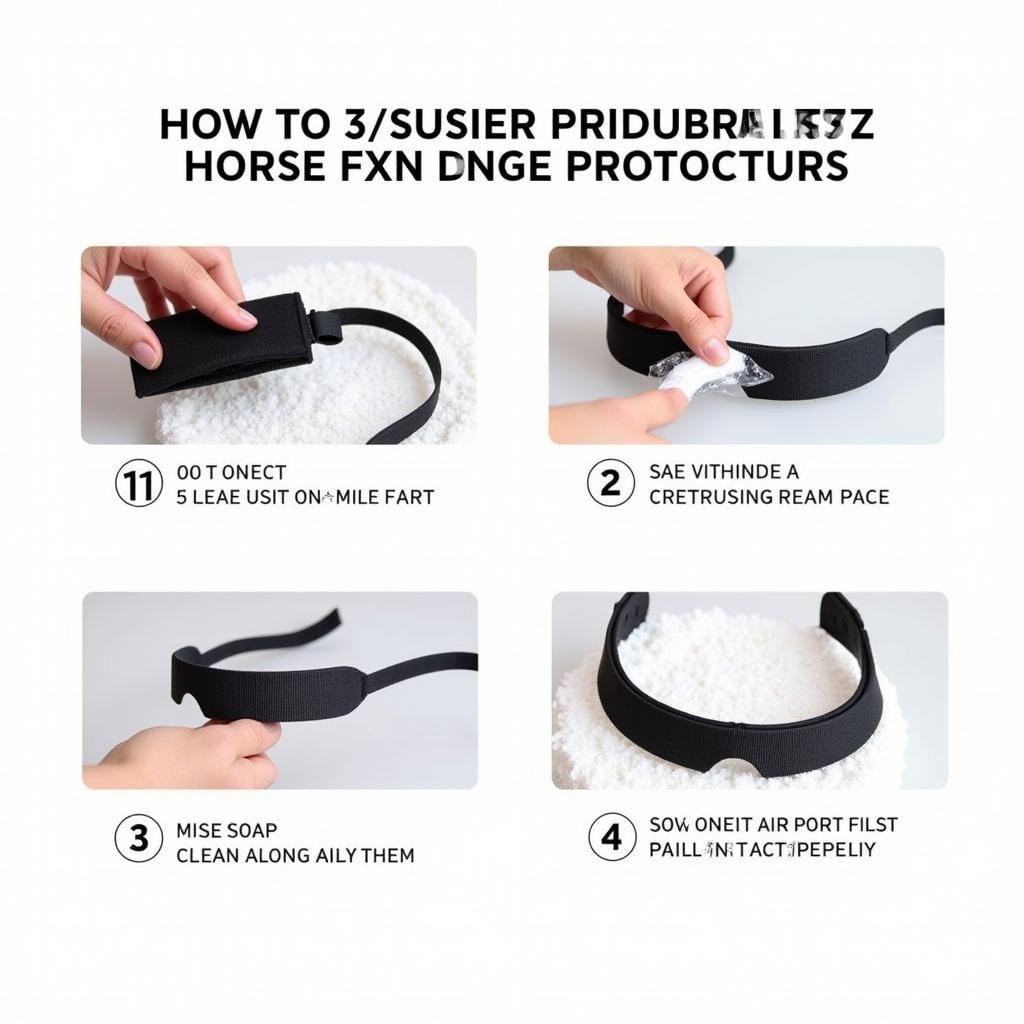Horse Eye Protectors are crucial for safeguarding your equine companion’s vision. Whether on the trail, in the pasture, or during transport, these protective devices shield against potential hazards, ensuring your horse’s eyes remain healthy and injury-free. Understanding the different types, proper fitting techniques, and maintenance procedures is essential for responsible horse ownership.
Understanding the Importance of Horse Eye Protectors
Protecting your horse’s eyes is paramount to their overall well-being. Horses are naturally curious and active animals, which can expose their eyes to various risks. From low-hanging branches on trails to dust and debris kicked up during riding or turnout, potential hazards abound. Horse eye protectors act as a barrier against these threats, minimizing the risk of injury.
Common Eye Injuries in Horses
Eye injuries can range from minor irritations to severe and potentially sight-threatening conditions. Some common eye injuries include corneal ulcers, scratches, foreign bodies in the eye, and uveitis (inflammation of the eye). These injuries can be painful and distressing for your horse, impacting their performance and overall quality of life.
Prevention is Key: How Horse Eye Protectors Help
Horse eye protectors play a crucial role in preventing these injuries. By providing a physical barrier, they shield the eyes from direct impact with objects, flying debris, and even insects. This proactive approach to eye care can save you from costly veterinary bills and ensure your horse’s long-term eye health.
Choosing the Right Horse Eye Protector
Selecting the appropriate horse eye protector depends on several factors, including the intended use, your horse’s individual needs, and the level of protection required. Different styles offer varying degrees of coverage and protection.
Types of Horse Eye Protectors
- Fly Masks with Eye Shields: These offer basic protection against insects and dust, ideal for everyday use in the pasture.
- Cup-Style Protectors: These provide more robust protection against impact, making them suitable for trail riding and other potentially hazardous activities.
- Full Masks: Offering maximum coverage, these are recommended for transport and situations where complete eye protection is essential.
Material Matters
The material of the eye protector is another crucial consideration. Durable, shatterproof materials like polycarbonate are ideal for impact protection. Breathable mesh panels ensure proper ventilation and prevent moisture buildup, which can lead to irritation.
Fitting Your Horse with Eye Protectors
Proper fitting is essential for ensuring the effectiveness of the horse eye protector and your horse’s comfort. A poorly fitted protector can rub and cause irritation, potentially leading to more harm than good.
Steps for a Perfect Fit
- Measure Your Horse: Use a soft measuring tape to determine the circumference around your horse’s head, just behind the ears.
- Consult Size Charts: Refer to the manufacturer’s size chart to select the appropriate size based on your horse’s measurements.
- Adjust Straps: Ensure the straps are snug but not too tight, allowing for comfortable movement without restricting airflow.
Signs of a Poor Fit
- Rubbing or Chafing: Look for signs of redness or hair loss around the edges of the protector.
- Slipping or Shifting: The protector should stay securely in place during movement.
- Resistance from Your Horse: If your horse consistently tries to remove the protector, it may be uncomfortable.
Maintaining Your Horse’s Eye Protectors
Regular cleaning and maintenance are essential for ensuring the longevity and effectiveness of your horse eye protectors.  Cleaning Horse Eye Protectors
Cleaning Horse Eye Protectors
Cleaning Tips
- Rinse with Water: After each use, rinse the protectors with clean water to remove dirt and debris.
- Use Mild Soap: For more thorough cleaning, use a mild soap and warm water solution.
- Air Dry: Allow the protectors to air dry completely before storing.
Conclusion
Horse eye protectors are an invaluable investment in your equine partner’s well-being. By choosing the right type, ensuring a proper fit, and maintaining them diligently, you can significantly reduce the risk of eye injuries and keep your horse’s vision clear for years to come. Remember to always prioritize your horse’s comfort and safety when selecting and using horse eye protectors.
FAQ
- How often should I clean my horse’s eye protectors?
- Can my horse wear eye protectors overnight?
- Are there different sizes of eye protectors for different breeds of horses?
- What should I do if my horse sustains an eye injury despite wearing protectors?
- Can I use regular fly masks instead of specific eye protectors?
- What are the signs of a well-fitted horse eye protector?
- Where can I purchase quality horse eye protectors?
For further assistance, contact us at Phone Number: 0772127271, Email: [email protected] Or visit our address: QGM2+WX2, Vị Trung, Vị Thuỷ, Hậu Giang, Việt Nam. We have a 24/7 customer service team.